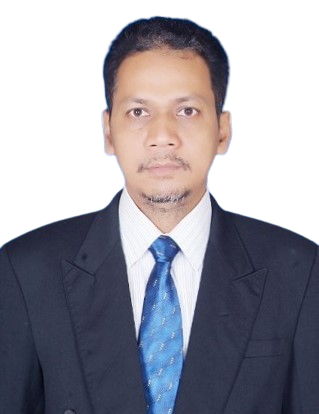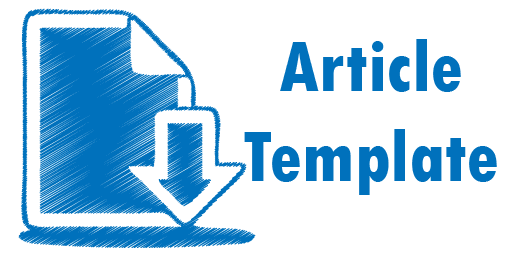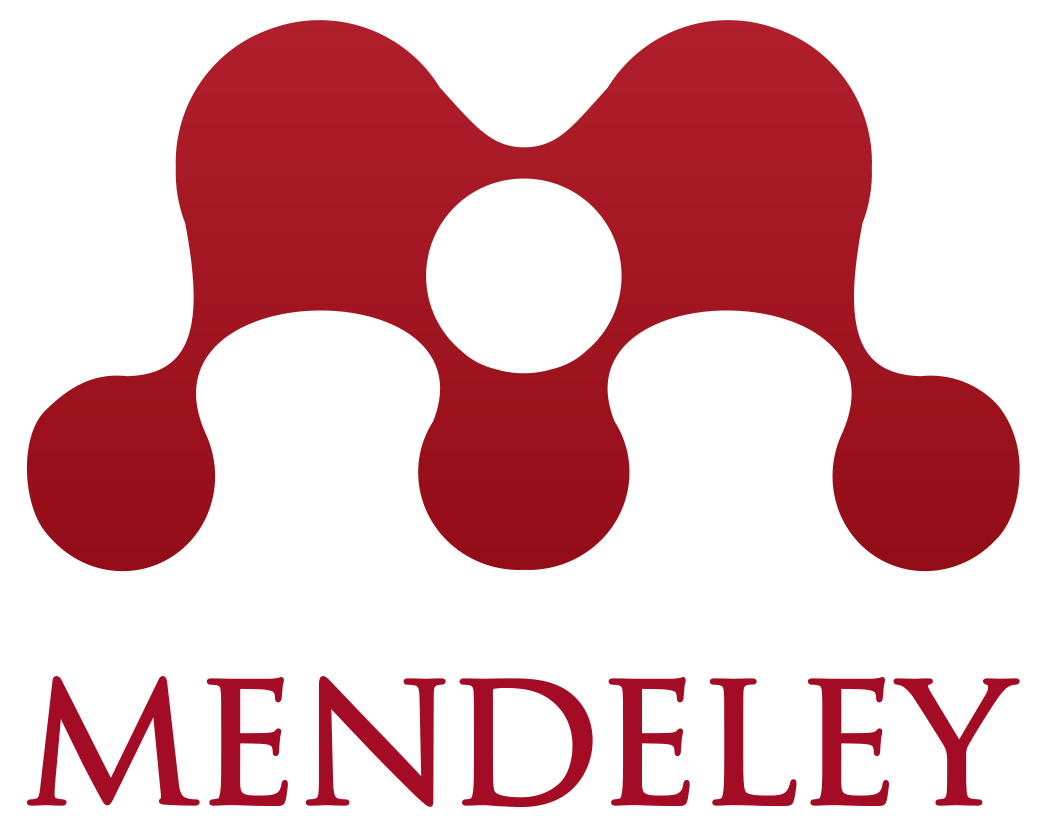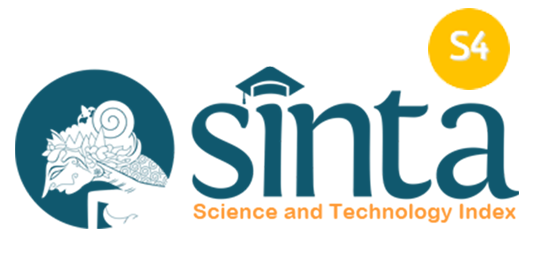Validitas dan Kepratisan Media Articulate Storyline Materi Teknologi Ramah Lingkungan Berkonteks Lahan Basah untuk Meningkatkan Literasi Sains
Abstract
Keterampilan literasi sains siswa perlu ditingkatkan sesuai tuntutan keterampilan abad 21 menuju era masyarakat 5.0. Terbatasnya e-book siswa dan media yang relevan, sehingga diperlukan bahan ajar sains yang memuat literasi sains. Penelitian ini bertujuan untuk menjelaskan validitas media dan kepraktisan media articulate storyline dan termasuk dalam penelitian dan pengembangan (R&D) dengan menggunakan model 4D (define, design, devolp, desiminate). Adapun teknik pengumpulan data menggunakan lembar validasi media dan angket respon peserta didik dengan teknik analisis data pada penelitian ini menggunakan uji validitas yaitu Aiken’s V dan persentase. Hasil penelitian ini menunjukkan bahwa media articulate storyline dan tes literasi sains yang dinyatakan valid dengan nilai berturut-turut 0,84 dan 0,87 termasuk kategori validitas tinggi dengan nilai konsistensi antar validator 84,33% dan 75,00%. Media diuji coba keterbacaan dan kepraktisan pada kelompok kecil mendapatkan nilai keterbacaan media dan angket respon peserta didik berutur-turut sebesar 84,80 % dan 84,40%. Berdasarkan hasil penelitian tersebut dapat disimpulkan bahwa media articulate storyline valid dan praktis diterapkan dalam pembelajaran IPA.
Students' scientific literacy skills need to be improved according to the demands of 21st-century skills towards the 5.0 society era. There are limited student e-books and relevant media, so science teaching materials that contain scientific literacy are needed. This study aims to explain the validity of the media and the practicality of the media articulate storyline and is included in research and development (R&D) using a 4D model (define, design, develop, disseminate). The data collection techniques used media validation sheets and student response questionnaires with data analysis techniques in this study using the validity test, namely Aiken's V and percentages. The results of this study indicate that the articulate storyline media and scientific literacy test, declared valid with a value of 0.84 and 0.87, respectively, are included in the high validity category with a consistency value between the validators of 84.33% and 75.00%. The media was tested for readability and practicality in small groups to get media readability scores and student response questionnaires of 84.80% and 84.40%, respectively. Based on the results of this study, it can be concluded that the articulation storyline media is valid and practically applied in science learning.
Keywords
Full Text:
PDFReferences
Ahmad, A., & Azam, T. (2019). Water purification technologies. Bottled and Packaged Water, 83–120. https://doi.org/10.1016/B978-0-12-815272-0.00004-0
Aini, N., Zainuddin, Z., & Mahardika, A. I. (2018). Pengembangan materi ajar ipa menggunakan model pembelajaran kooperatif berorientasi lingkungan lahan basah. Berkala Ilmiah Pendidikan Fisika, 6(2), 264. https://doi.org/10.20527/bipf.v6i2.4919
Akbar, S. (2017). Instrumen perangkat pembelajaran cetakan kelima. PT Remaja Rosdakarya.
Ali, Y., Razi, M., De Felice, F., Sabir, M., & Petrillo, A. (2019). A VIKOR based approach for assessing the social, environmental and economic effects of “smog” on human health. Science of The Total Environment, 650, 2897–2905. https://doi.org/10.1016/J.SCITOTENV.2018.10.041
Arikunto, S. (2010). Prosedur Penelitian Suatu Pendekatan Praktik. Rineka Cipta.
Arshad, Z., Robaina, M., Shahbaz, M., & Veloso, A. B. (2020). The effects of deforestation and urbanization on sustainable growth in Asian countries. Environmental Science and Pollution Research, 27(9), 10065–10086. https://doi.org/10.1007/s11356-019-07507-7
Barbasz, A., Kreczmer, B., Skórka, M., & Czyżowska, A. (2020). Toxicity of pesticides toward human immune cells U-937 and HL-60. Journal of Environmental Science and Health, Part B, 55(8), 719–725. https://doi.org/10.1080/03601234.2020.1777059
Borich, G. D. (2003). Observation for effective teaching research-based practica fourth edition. : Pearson Education Inc.
Bransford, J. D., & Stein, B. S. (1993). The IDEAL problem solver: A guide for improving thinking, learning, and creativity. New York: W.H.Freeman.
Bybee, R. W. (2008). Scientific literacy, environmental issues, and pisa 2006: the 2008 paul f-brandwein lecture. Journal of Science Education and Technology, 17(6), 566–585. https://doi.org/10.1007/s10956-008-9124-4
Coccia, M. (2020). Factors determining the diffusion of COVID-19 and suggested strategy to prevent future accelerated viral infectivity similar to COVID. Science of The Total Environment, 729, 138474. https://doi.org/10.1016/J.SCITOTENV.2020.138474
Damawati, Jamiludin, Batia, L., Irawaty, & S. (2019). Pemberdayaan Guru melalui pengembangan multimedia pembelajaran interaktif dengan aplikasi articulate storyline. Jurnal Pengabdian Kepada Masyarakat, 1(1), 8–16.
Dewi, I. N., Poedjiastoeti, S., & Prahani, B. K. (2017). ElSII learning model based local wisdom to improve students’ problem solving skills and scientific communication. International Journal of Education and Research, 5(1), 107–118.
Dwipayana, P. A. P., Redhana, I. W., & Juniartina, P. P. (2020). Analisis kebutuhan pengembangan multimedia interaktif berbasis konteks budaya lokal untuk pembelajaran ipa smp. Jurnal Pendidikan Dan Pembelajaran Sains Indonesia, 3(1), 49–60. https://ejournal.undiksha.ac.id/index.php/JPPSI/article/view/24628
Fauziah, L. R. (2020). Analisis kebutuhan pengembangan media pembelajaran interaktif berbasis adobe flash cs6. Al Murabbi, 5(2), 1–7. https://doi.org/10.35891/amb.v5i2.2135
Fernández-Navarro, P., García-Pérez, J., Ramis, R., Boldo, E., & López-Abente, G. (2017). Industrial pollution and cancer in Spain: An important public health issue. Environmental Research, 159, 555–563. https://doi.org/10.1016/J.ENVRES.2017.08.049
Hussain, J., Khan, A., & Zhou, K. (2020). The impact of natural resource depletion on energy use and CO2 emission in Belt & Road Initiative countries: A cross-country analysis. Energy, 199, 117409. https://doi.org/10.1016/J.ENERGY.2020.117409
Irmita, L., & Atun, S. (2018). The influence of Technological Pedagogical and Content Knowledge (TPACK) approach on science literacy and social skills. Journal of Turkish Science Education, 15(3), 27–40. https://doi.org/10.12973/tused.10235a
Maharani, F. W., Bektiarso, S., & Prihandono, T. (2018). Kemampuan Siswa SMA dalam Menyelesaikan Soal UN Fisika Berdasarkan Tahapan IDEAL pada Materi Listrik Statis. Jurnal Pembelajaran Fisika, 7(2), 154-161.
Mahmood, H., Alkhateeb, T. T. Y., & Furqan, M. (2020). Industrialization, urbanization and CO2 emissions in Saudi Arabia: Asymmetry analysis. Energy Reports, 6, 1553–1560. https://doi.org/10.1016/J.EGYR.2020.06.004
Maula, N. K. (2020). Analisis peningkatan keterampilan problem solving siswa smp dalam pembelajaran matematika dengan ideal problem-solving berbasis game-based learning. Jurnal PETIK, 6(2), 71-80.
Murshed, M. (2022). Revisiting the deforestation-induced EKC hypothesis: the role of democracy in Bangladesh. GeoJournal, 87(1), 53–74. https://doi.org/10.1007/s10708-020-10234-z
OECD. (2019a). No Title. In OECD Publishing. (p. https://doi.org/10.1787/b25efab8-en).
OECD. (2019b). PISA 2018 Assessment and Analytical Framework. In OECD Publishing. https://doi.org/10.1787/b25efab8-en
PAMSIMAS. (2017). Instalasi Pengolahan Air (IPA) Gambut PAMSIMAS III di Desa Pantai Hambawang Kecamatan Mandastana Kabupaten Barito Kuala, Provinsi Kalimantan Selatan
Purba, Ramen A, Rofiki, I., Purba, S., Purba, P. B., Bachtiar, E., Iskandar, A., Febrianty, F., Yanti, Y., Simarmata, J., & Chamidah, D. (2020). Pengantar media pembelajaran. Yayasan Kita Menulis.
Rahmatih, A. N., Yuniastuti, A., & Artikel, I. (2017). Pengembangan booklet berdasarkan kajian potensi dan masalah lokal sebagai. Journal of Innovative Science Education 6(2), 162–169.
Ravindra, K., & Mor, S. (2019). Distribution and health risk assessment of arsenic and selected heavy metals in Groundwater of Chandigarh, India. Environmental Pollution, 250, 820–830. https://doi.org/10.1016/J.ENVPOL.2019.03.080
Rianto. (2020). Pembelajaran interaktif berbasis articulate storyline 3. Indonesian Language Education and Literature, 6(1), 84–92.
Sabharwal, M. (2013). The use of eco-friendly technology and green methods to bring down the carbon footprint by indian banks. Masters International Journal of Management Research and Development (MIJMRD), I.
Safira, A. D., Sarifah, I., & Sekaringtyas, T. (2021). Pengembangan media pembelajaran interaktif berbaisis web artikculate storyline pada pembelajaran IPA di kelas V, Jurnal Kependidikan. 2(2), 237–253.
Sejati, A. W., Buchori, I., Kurniawati, S., Brana, Y. C., & Fariha, T. I. (2020). Quantifying the impact of industrialization on blue carbon storage in the coastal area of Metropolitan Semarang, Indonesia. Applied Geography, 124, 102319. https://doi.org/10.1016/J.APGEOG.2020.102319
Sholahuddin, A., Sholihah, A., Mahdian, & Susilowati, E. (2020). Can the guided inquiry with environment learning resources increase conceptual understanding and scientific literacy? Journal of Physics: Conference Series, 1422(1). https://doi.org/10.1088/1742-6596/1422/1/012038
Stevenson, R. B. (2007). Schooling and environmental education: contradictions in purpose and practice. Environmental Education Research, 13(2), 139–153. https://doi.org/10.1080/13504620701295726
Suhailah, F., Muttaqin, M., Suhada, I., Jamaluddin, D., & Paujiah, E. (2021). Articulate storyline: sebuah pengembangan media pembelajaran interaktif pada materi sel. Pedagonal : Jurnal Ilmiah Pendidikan, 5(1), 19–25. https://doi.org/10.33751/pedagonal.v5i1.3208
Syahmani. (2016). Aplikasi metode hibrid pretreatment koagulasi dan sistem kolom kitosan sebagai alternatif pengolahan air hitam (black water) lahan rawa. The Proceeding of International Seminar on Ethnopedagogy, 489–502.
Syahmani, Kusasi, M., & Najmiati, I. (2021a). Validity of teaching materials for environmentally friendly technology products using STEM-based guided inquiry to improve students’ scientific literacy competence. Journal of Physics: Conference Series, 2104(1). https://doi.org/10.1088/1742-6596/2104/1/012019
Syahmani, S., Hafizah, E., & Sauqina, S. (2021b). Pengaruh pembelajaran dengan pendekatan stem berbasis lahan basah pada literasi sains siswa. Prosiding Seminar Nasional Lingkungan Lahan Basah, 6(2), 1–5. http://snllb.ulm.ac.id/prosiding/index.php/snllb-lit/article/view/500
Tang, S., Chen, J., Sun, P., Li, Y., Yu, P., & Chen, E. (2019). Current and future hydro-power development in Southeast Asia countries (Malaysia, Indonesia, Thailand and Myanmar). Energy Policy, 129, 239–249. https://doi.org/10.1016/J.ENPOL.2019.02.036
Thomson, S., Bortoli, L. De, Underwood, C., & Schmid, M. (2019). PISA 2018: Reporting Australia’s Results. Volume I Student Performance. In OECD Programme for International Student Assessment (PISA) Australia.
Tri, I., Pratiwi, M., Meilani, R. I., Setiabudhi, J., Bandung, N., & Indonesia, J. B. (2018). Peran media pembelajaran dalam meningkatkan prestasi belajar siswa ( The role of learning media in increasing students ’ learning achievement ). 3(2), 173–181. https://doi.org/10.17509/jpm.v3i2.11762
Wulandari, N., & Sholihin, H. (2016). Analisis kemampuan literasi sains pada aspek pengetahuan dan kompetensi sains siswa SMP pada materi kalor. Edusains, 8(1), 66– 73.
DOI: https://doi.org/10.20527/jmscedu.v2i1.5283
Refbacks
- There are currently no refbacks.

This work is licensed under a Creative Commons Attribution 4.0 International License.

Journal Of Mathematics Science and Computer Education is licensed under a Creative Commons Attribution-ShareAlike 4.0 International License.









.jpg)
1.png)

